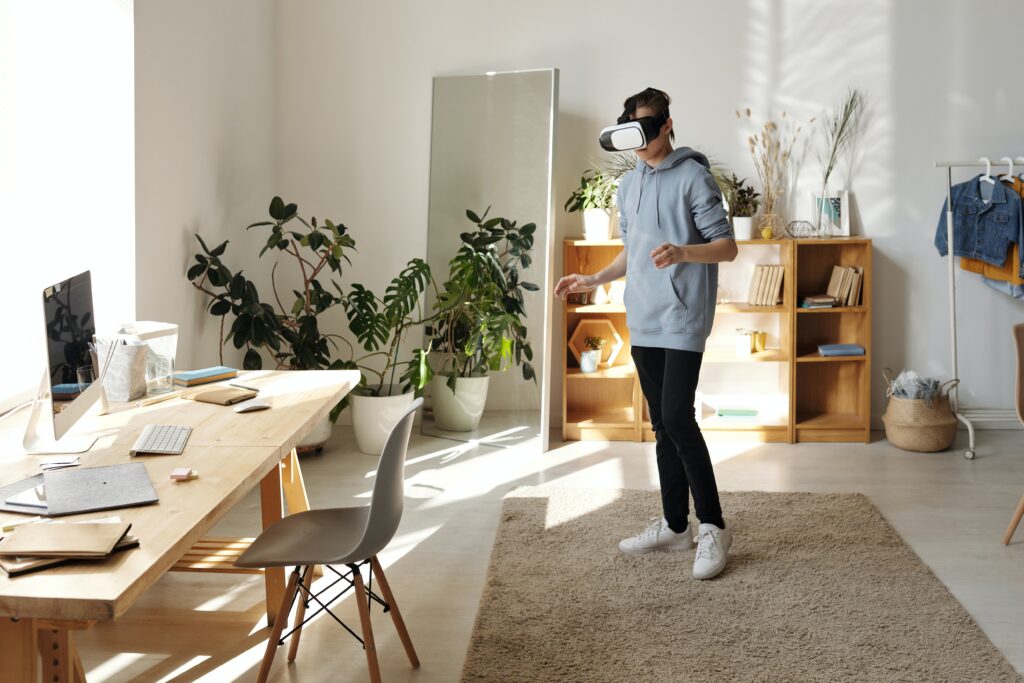
A virtual reality (VR) mall is a virtual shopping environment that allows users to browse and shop for products using VR technology. VR malls typically simulate the experience of walking through a physical shopping center, with virtual storefronts for different retailers and the ability to browse and purchase products as if you were in a physical store.
In a VR mall, users can typically select items to purchase using virtual hands or a controller, and the products are then delivered to their physical location. Some VR malls may also offer additional features, such as the ability to try on virtual clothing or makeup, or to interact with other users in a social setting. VR malls can be accessed using VR headsets or other VR hardware, and may be available as standalone VR experiences or as part of a broader VR platform.
There are several potential advantages and disadvantages to virtual malls:
Advantages:
- Convenience: Virtual malls can be accessed from anywhere at any time, making it easy for users to shop from the comfort of their own homes.
- Wide selection: Virtual malls may offer a larger selection of products than a physical mall, as they are not limited by the space constraints of a physical location.
- Customization: Virtual malls may offer personalized recommendations and customized shopping experiences based on a user’s past purchases and browsing history.
- Cost savings: Virtual malls may offer lower prices than physical stores due to lower overhead costs, such as rent and utilities.
Disadvantages:
- Limited tactile experience: Virtual malls do not offer the opportunity to touch and feel products before making a purchase, which may be a disadvantage for some shoppers.
- Lack of social interaction: Virtual malls do not offer the opportunity to interact with other shoppers or sales staff in person, which may be a disadvantage for some people who enjoy the social aspect of shopping.
- Technical difficulties: Virtual malls may be prone to technical issues, such as glitches or slow loading times, which can be frustrating for users.
- Delivery delays: Virtual malls rely on physical delivery of products, which may be subject to delays due to shipping issues or other factors.
Overall, the advantages and disadvantages of virtual malls will depend on individual preferences and needs. Some people may prefer the convenience and cost savings of virtual shopping, while others may prefer the tactile experience and social interaction of shopping in a physical store.




